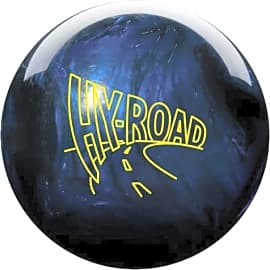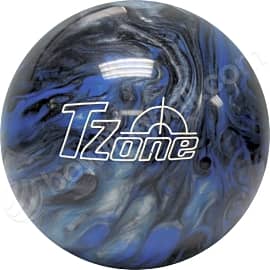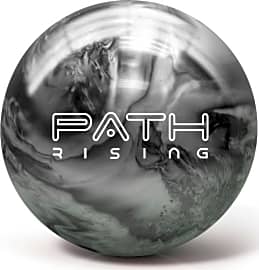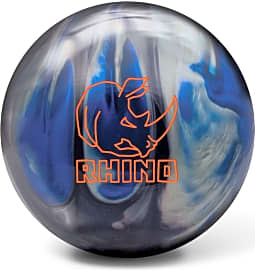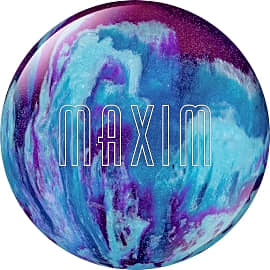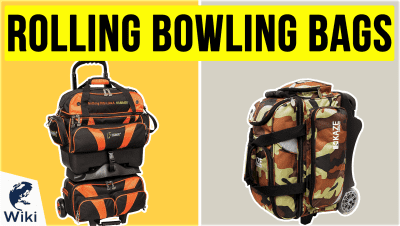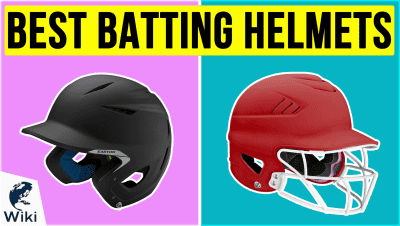The 10 Best Bowling Balls

This wiki has been updated 39 times since it was first published in April of 2015. In bowling, your choice of equipment actually has an enormous effect on your performance. Balls vary not only in size but in outer core material, inner core shape, radius of gyration, and surface grit and polish, both of which determine the kinds of lane conditions the ball is best adapted for. In this list, we've taken all of these factors into account, including a ball for every situation. When users buy our independently chosen editorial selections, we may earn commissions to help fund the Wiki.
Editor's Notes
November 25, 2020:
We gave the list a significant overhaul in this update, replacing six items which had either become unavailable or been succeeded by newer releases. We exchanged the Hammer Black Widow Legend with the Hammer Black Widow 2.0, which is similarly well-suited to heavily oiled lanes and makes use of a the same gas mask core shape. We also removed the Columbia 300, Motiv Venom Cobra, Hammer Gauntlet, DV8 Vandal Strike, and the Storm Timeless.
We added the Storm Phaze III and Storm Hy-Road, both of which cater to a wide range of play styles and lane conditions since they have an ability to curb excessive hooking. We added the Brunswick Rhino and the Pyramid Path Rising for those who are just learning to hook, as each of these choices is capable of the delayed angular reaction necessary for hooking without being difficult to control. Finally, we included the Brunswick T-Zone for beginners who have no interest in learning to hook at all, as it rolls straight and is great for picking up spares.
Once you've settled on a ball, you'll need a reliable way to transport it, both to protect it from the elements and keep from having to carry it around in your arms all the time. Take a look at the best bowling bags and rolling bowling bags to see which one best suits you.
April 17, 2019:
While casual players may not realize it, every avid bowler understands that the construction of your ball greatly affects how it performs on the lanes. For example, certain grits are better suited to heavy-oil lanes, while others do well on low-oil lanes. In fact, the coverstock is said to be responsible for up to 80-percent of the balls on-lane performance. Core structure plays a role too. Though the difference is slight, asymmetrical cores tend to produce a more angular ball motion than their symmetrical counterparts, which can translate to better hooking action.
High-level players who like a late, but aggressive hook, would do well with the Storm Timeless, Hammer Gauntlet, or DV8 Vandal Strike, as these are designed to pick up on action far down the lane. Power throwers will appreciate the Hammer Black Widow Legend and Motiv Venom Cobra, which seem to barrel right through the pins without slowing. If you are a straight roller, take a look at the Brunswick Lizard Eye, Columbia 300, and Ebonite Maxim. These all run true, though they don't have high hook potential, so if you ever decide to change up your playing style you will probably need to buy a different one. The Pyramid Path and Ebonite Maxim are good choices for the casual player who just wants something to give them an edge over the low-quality balls commercial facilities provide.
A Brief History Of Bowling
The Egyptians were hardly alone in their nascent love for what would become a sport beloved by tens of millions of people worldwide.
The first time an activity resembling the modern sport/pastime of bowling was undertaken dates back at least 5,000 years. We have evidence that the Ancient Egyptians enjoyed target-style rolling or throwing games as far back as 3,200 years before the advent of the Common Era. The Egyptians were hardly alone in their nascent love for what would become a sport beloved by tens of millions of people worldwide. The Ancient Romans also enjoyed similar sports, using balls made of everything from leather-wrapped dried plant fiber to stones and spheres wrought of porcelain.
By the later Middle Ages, bowling had become popular across much of the known world. A sport similar to bocce was popular in some areas, notably the Italian peninsula, while the precursor to modern bowling was catching on in England. In fact, the sport of lawn bowling, still practiced today, can be dated to at least 1299.
By the 19th century, bowling had become a popular pastime across much of the western world, with a National Bowling Association (yes, that's the NBA) formed in New York City in 1875. This organization was established in large part to standardize the rules of ten pin bowling, which had become and would remain the most popular iteration of the sport.
The 20th Century saw the development of more advanced types of bowling ball; the century started off with most balls made from hardwoods, but by the year 1905, many players had turned to balls made out of a material called Ebonite, a special vulcanized hard rubber which was named for the company that produced it.
Mineralite bowling balls were introduced by the Brunswick company at about the same time as Ebonite, and both materials would remain popular for decades to come. The first urethane balls, familiar to many of today's bowlers, were not produced until Ronald Reagan was in the Oval Office.
The Right Bowling Ball For Beginners
For the casual bowler who is ready to own their first ball, there are several factors to be considered, and they are decidedly different than those the more experienced, dedicated roller needs to worry about. The first, of course, is price. Frankly speaking, in the hands of an inexperienced and less-than-skilled bowler, even the most reactive ball won't do all that much more than a more basic bowing ball, because putting the right spin and attitude on a ball takes skill and experience.
First let's talk about weight: the mechanics of bowling are specific, so even a stronger person might do better with a lighter ball.
So, don't spend too much on your first ball; chances are it's going to get pretty beaten up anyway. Instead, consider less expensive balls and keep weight, coverstock, and grip in mind.
First let's talk about weight: the mechanics of bowling are specific, so even a stronger person might do better with a lighter ball. Aim is more important than power, and balance is critical to aim.
As for the coverstock, or exterior of the ball, a "pearl" or "stiff" coverstock is usually the best choice for newer bowlers, who tend to send their balls straight down the lane rather than worrying about hooking it into the pins regardless of the lane's oil conditions.
And finally, consider your grip in terms of finger position. Your palm should rest more or less flat on the ball when your middle finger, ring finger, and thumb are inserted, but work with a pro shop to determine the ideal spread between your ring and middle finger prior to ordering or drilling, if possible.
For the record, most novice bowlers should settle for a basic plastic ball rather than a urethane or reactive resin option. Plastic balls cost less, and you won't miss out on the control properties of those other balls at this point anyway.
The Right Bowling Ball For Experienced Rollers
For the more experienced bowler, the roller who enjoys frequent visits to the lanes for fun or who even takes part in more serious league and competition play, choosing the right bowling ball is a critical decision. You can't control the conditions of the lane and you can't always roll strikes, after all, but you can control how your ball pairs with your rolling style to give you an edge and make sure you at least pick up that spare.
In fact, as your control increases, your ball's optimal weight might even go down.
As it is with the novice, so too is it with the master: size matters. Just because you've been bowling for years doesn't mean it's time for a heavier ball. In fact, as your control increases, your ball's optimal weight might even go down.
The experienced bowler isn't just throwing their ball straight down the line, so a plastic ball is pretty much out. Rather, you need to consider a urethane or reactive resin ball that can be made to curve and drift at your deft command.
Hook is, of course, directly affected by the material/coverstock you choose, but there is also the Radius of Gyration to consider. Simply put (or as simply as possible), the RG of a bowling ball is a measurement of the distance that its mass can rotate without changing the inertia of the ball. What that really means, boiled down, is the ball's resistance to spinning around, which is defined by the density of its core. The more dense a ball's core, the sooner it will start to spin, which is great if you have masterful aim and like wide hooks. The less-dense a ball's core, the longer it will slide straight ahead, resisting the spinning that will pull it across the lane.
So know your style, then pick your RG, then pick your material, then pick your ball. Then, go for that turkey.



